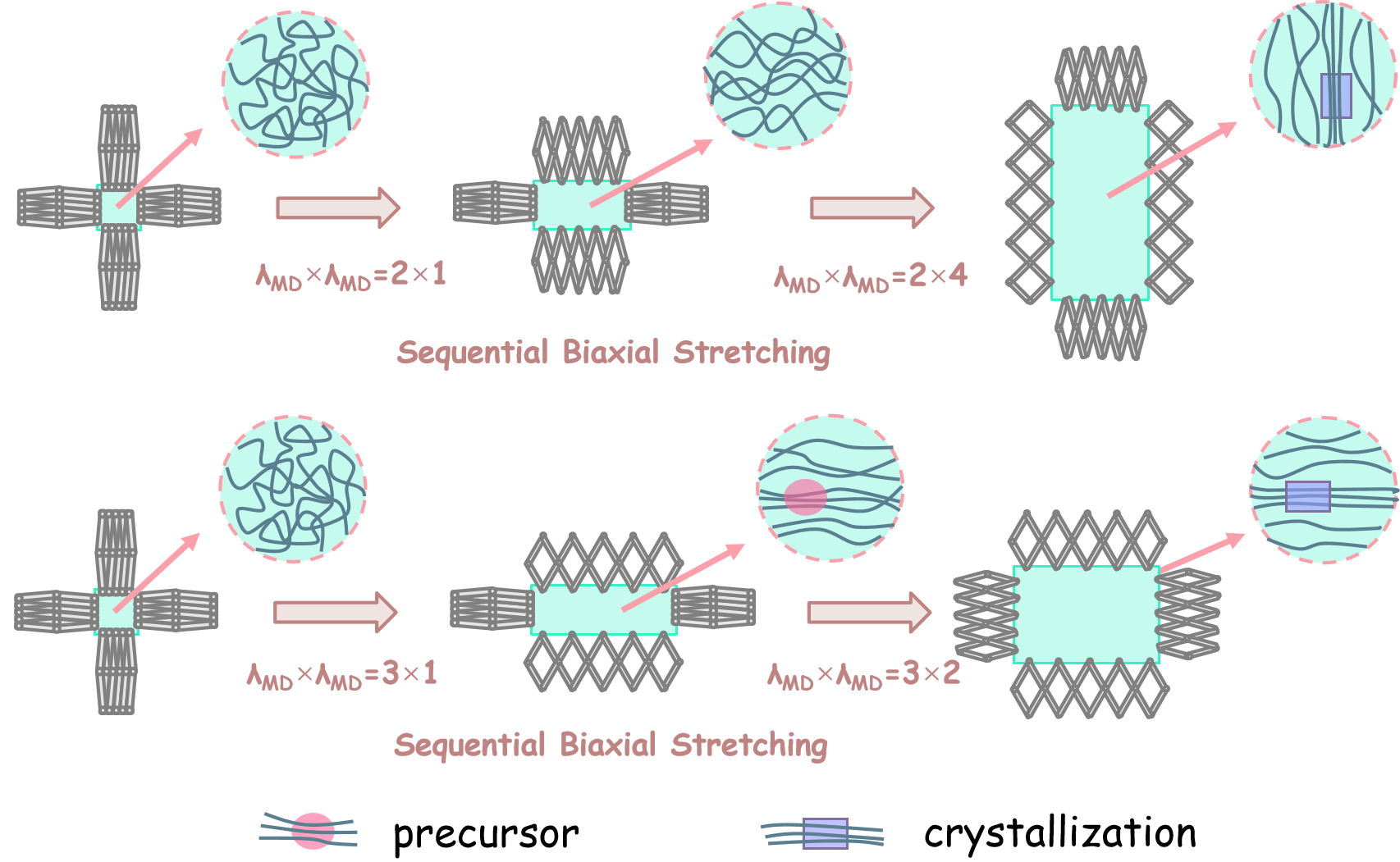
Under the joint supervision of Professor Kunpeng Cui (Special Appointed Professor at the University of Science and Technology of China) and Associate Professor Hang Guo (Xi’an Jiaotong University), our team’s master’s student Yunqing Ma and collaborators have focused on the critical scientific issue of flow-induced crystallization (FIC) in polymer processing. They systematically investigated the crystallization behavior of polylactic acid (PLA) under various stretching modes, particularly revealing the profound influence of biaxial stretching on polymer crystallization kinetics and crystal orientation.
The research team employed a self-developed biaxial stretching platform compatible with in-situ synchrotron X-ray scattering techniques. By combining this with in-situ wide-angle X-ray scattering (WAXS), they deeply examined the structural evolution of PLA films under uniaxial (UNI), constant-width uniaxial (UCW), simultaneous biaxial (SIM), and sequential biaxial (SEQ) stretching modes. The related work was recently published in Macromolecules.
This paper provides insights into the mechanism of crystallization suppression. It was found that in SIM and UCW stretching modes, lateral stresses disrupted the molecular chain orientation, significantly suppressing crystallization. This finding highlights that chain segment orientation order, rather than conformational ordering as emphasized in traditional FIC theories, dominates the occurrence of FIC. Furthermore, in SEQ stretching, the crystallization kinetics and crystal orientation can be precisely tuned. When crystallization is not induced in the first stretching step, the second orthogonal stretching step can trigger crystal orientation either along the original stretching direction or the orthogonal direction—challenging the traditional understanding that FIC only leads to crystallization in the current stretching direction.
Finally, the researchers constructed a FIC phase diagram model. This predictive diagram categorizes crystallization behaviors under different stretching ratios into specific regions, offering a visual and quantitative control pathway for the industrial production of high-performance PLA films.
This study not only enriches the theoretical foundation for polymer crystallization behavior under complex stress fields but also provides direct process optimization guidance for the industrial processing of PLA, a green and biodegradable material. In future work, the team plans to further explore multi-step biaxial stretching strategies to suppress early-stage crystallization and enhance chain mobility, aiming to fabricate thinner and more balanced high-performance PLA films.
This research was supported by the National Natural Science Foundation of China (Grant No. 52273028), the CAS-CAEP Joint Fund (Grant No. U2430213), the Hefei Municipal Major Science and Technology Project under the “Revealing the List and Taking the Lead” initiative (Grant No. 2022-SZD-005), and the Chinese Academy of Sciences (Grant No. JZHKYPT-2021-04). Technical support for the experiments was provided by Beamline BL10U1 of the Shanghai Synchrotron Radiation Facility.
Ma Y, Zhu J, Li W, et al. How Biaxial Flow Modulates Crystal Nucleation Behavior in Poly (lactic acid)[J].Macromolecules,2025.
Paper link:https://doi.org/10.1021/acs.macromol.5c01278


